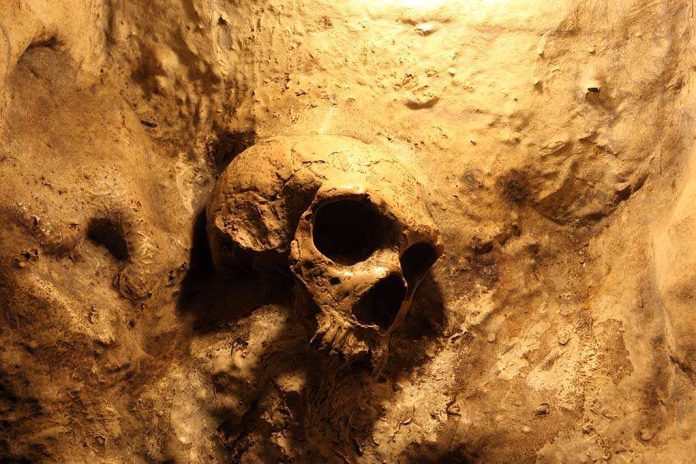
A weekend hobbyist’s casual stroll along an Indiana riverbank just rewrote the archaeological timeline for the American Midwest, uncovering human remains that predate Stonehenge by centuries.
Story Highlights
- Human skull discovered on Whitewater Riverbank dates back 4,270 years to 2,300 BC
- Forensic experts suggest remains may belong to ancient Shawnee or Miami tribal ancestors
- Discovery involves complex coordination between law enforcement, universities, and tribal representatives
- Find represents one of the oldest human remains ever discovered in Indiana
An Amateur Discovery of Professional Magnitude
The skull surfaced along the Whitewater Riverbank in Fayette County, discovered by an unnamed hobbyist who recognized the significance of their find. Fayette County Coroner Eddie Richardson announced the discovery on October 13, revealing that forensic analysis had determined the remains belonged to someone who lived around 2,300 BC. The hobbyist immediately reported the discovery to local authorities, triggering a careful chain of custody that would involve multiple universities and state agencies.
Richardson described the discovery as “a powerful and humbling reminder that people have walked this land for millennia.” The Fayette County Sheriff’s Department initially received the remains, but the extraordinary age quickly elevated the case beyond typical jurisdictional boundaries. What began as a potential missing person investigation transformed into an archaeological treasure requiring delicate scientific and cultural handling.
Forensic Detectives Unravel Ancient Mysteries
Experts from the University of Georgia and the University of Indianapolis Identification Center, including Dr. Krista Latham, conducted the forensic analysis that confirmed the skull’s remarkable antiquity. Their examination suggested the individual may have belonged to the Shawnee or Miami tribes, though definitive tribal affiliation remains tentative. The dating process involved sophisticated techniques that revealed this person lived during the late Neolithic period, when copper tools were just beginning to appear in North America.
The forensic team’s work represents cutting-edge collaboration between academic institutions and law enforcement. These specialists routinely handle contemporary cases, but ancient remains require entirely different protocols and considerations. The skull’s preservation after more than four millennia speaks to unique environmental conditions along the Whitewater River, which may have naturally mummified or mineralized the bone structure over thousands of years.
Legal and Cultural Complexities Emerge
The Indiana Department of Natural Resources now oversees the complex process of determining proper repatriation and site management. Federal laws, including the Native American Graves Protection and Repatriation Act, mandate specific procedures when Indigenous remains are discovered. The coroner’s office must navigate between scientific curiosity and cultural sensitivity, ensuring that any further study respects tribal sovereignty and ancestral rights.
Tribal representatives from the Shawnee and Miami nations hold significant authority in determining the final disposition of these remains. Their involvement reflects decades of legal precedent establishing Indigenous peoples’ rights to reclaim ancestral artifacts and human remains. The discovery also raises questions about whether the site should undergo further archaeological investigation or remain undisturbed to prevent additional disturbance to potential burial grounds.
Implications Beyond a Single Skull
This discovery challenges assumptions about prehistoric settlement patterns in the Ohio River Valley. The presence of human remains from 2,300 BC suggests more extensive Indigenous habitation than previously documented in eastern Indiana. Archaeologists now wonder whether systematic investigation might reveal additional artifacts or burial sites that could illuminate daily life, migration patterns, and cultural practices of these ancient peoples.
The find also highlights the valuable role amateur enthusiasts play in archaeological discovery. While professional archaeologists conduct systematic excavations, casual hobbyists often stumble upon significant artifacts that might otherwise remain buried. The key lies in proper reporting and handling, which this hobbyist executed flawlessly by immediately contacting authorities rather than attempting personal collection or analysis.
Sources:
4,200-Year-Old Skull Found Along Fayette County Riverbank






